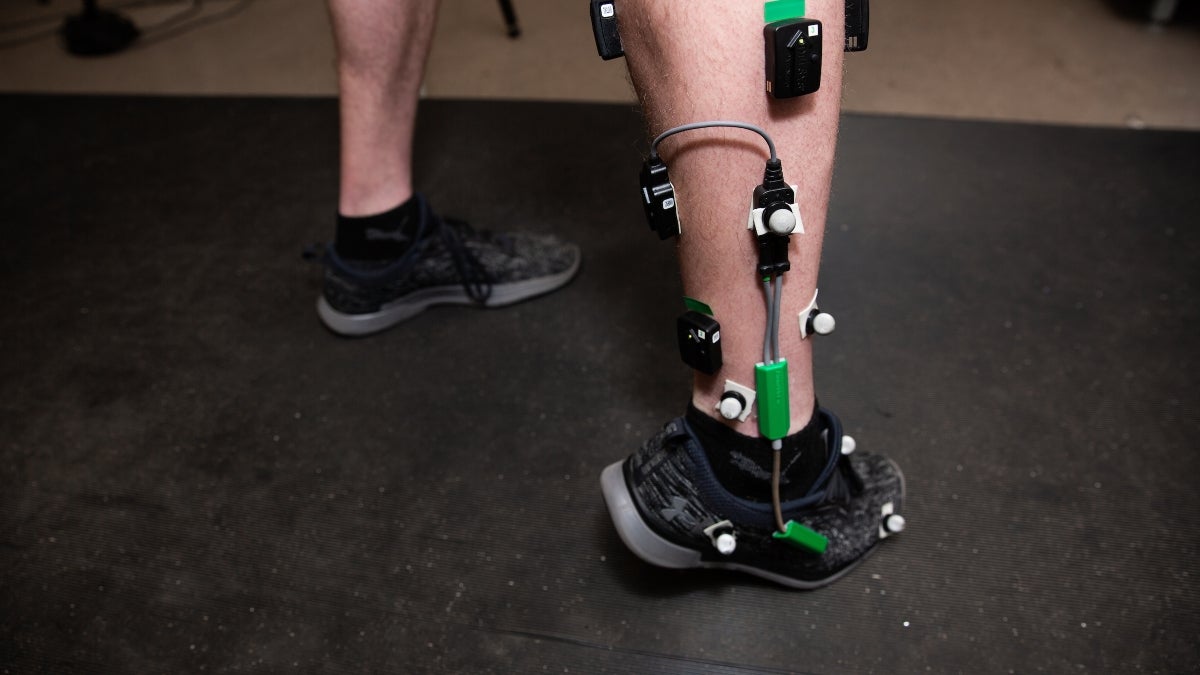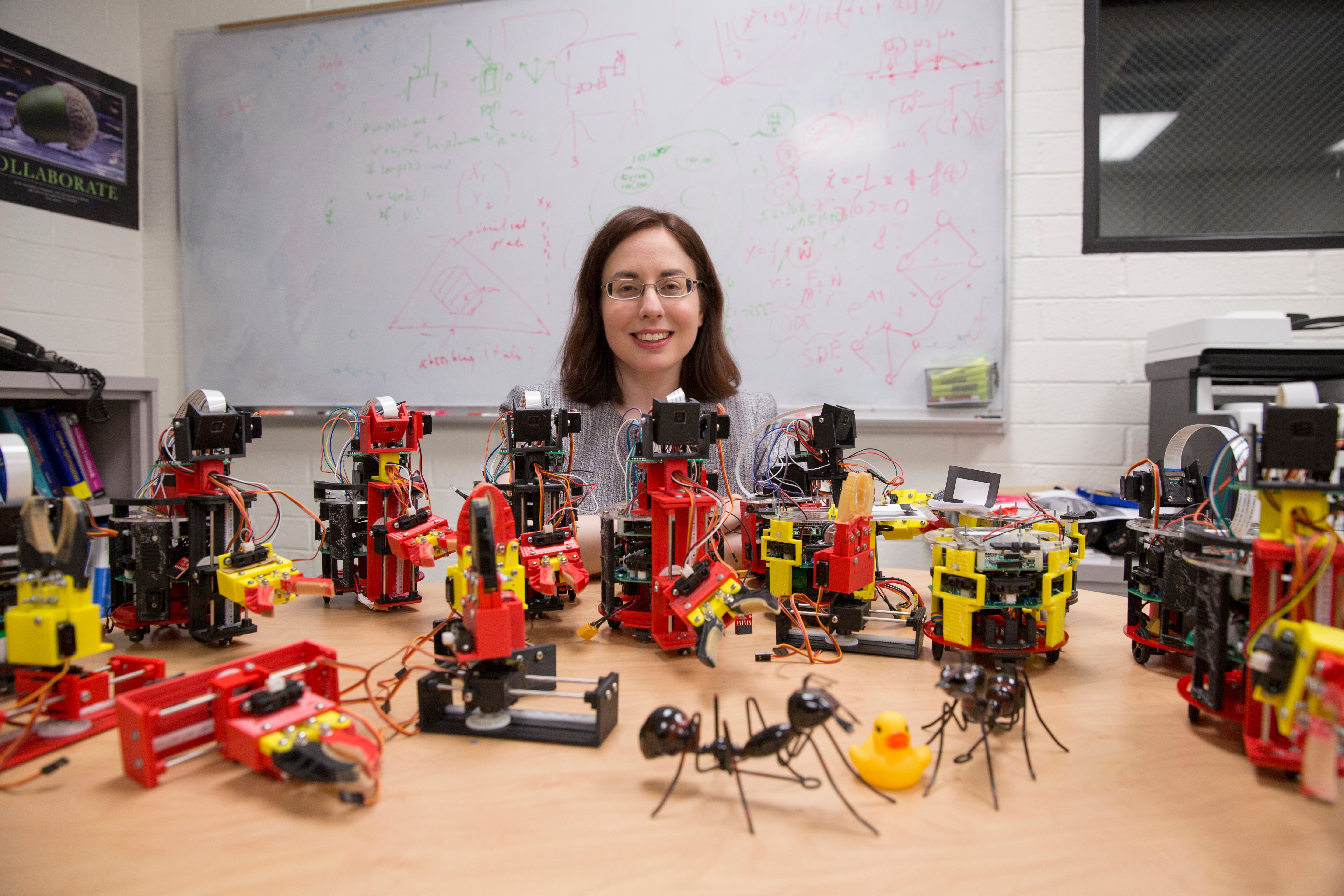Twenty-five faculty members at Arizona State University are researching the cutting edge of robotics. Seven of them have won the NSF CAREER award, the National Science Foundation's most prestigious award in support of early-career faculty.
It's safe to say, ASU is poised to make great strides in the field.
“We have talent,” exoskeleton roboticist Tom Sugar said.
Some of their research has gone out into the world and become reality, like a prosthetic hand that can feel. Some of it, like a flying swarm of tiny robots, is a long way off.
Here are some highlights from inside ASU's robotics labs:
Enhancing quality of life
Daniel Aukes, an assistant professor at the Polytechnic campus, is leading the Kaiteki Project.
About 50 million people in the U.S. have disabilities that hamper their mobility. Shopping in stores, strolling around neighborhoods and crossing an airport unassisted are some of the things — which people with disabities have difficulty doing — that many of us take for granted.
Aukes and four other roboticists are working on wearable, foldable robotic exoskeletons to enhance quality of life. The devices would fit around knees, elbows, waists and other areas. The team’s approach for the devices is threefold: providing alternate ways to carry loads, reconfiguring itself for different activities and learning with the wearer to improve usability. The devices would use machine learning to learn about the wearer, and guide and train them, for a symbiotic experience.
Making the work easier
In his Human Machine Integration Lab, Sugar has created exoskeletons to cool bodies in extreme heat, make runners faster, ease the load for backpackers and climb walls like Spiderman.
In addition to working on the Kaiteki Project with Aukes, Sugar is working on an exoskeleton for the U.S. Air Force for pushing and lifting. He also has a grant to build an elbow exoskeleton for people who can’t use their hands and elbows because of severe nerve injuries in the shoulder.
“In my realm, we're trying to build robotic devices to help people, to assist people,” Sugar said. “We're trying to build devices to make the work less fatiguing, easier.”
Robot swarms
Spring Berman is an associate professor of aerospace and mechanical engineering in the School for Engineering of Matter, Transport and Energy and is graduate faculty for Computer Science and Exploration Systems Design. One of her research areas is creating swarms of tiny robots.
They could be used for search and rescue, mapping and a host of other applications. Aspects she and her team have investigated include collective transport, collision-free navigation, swarm herding, and mapping and estimation.
Spring Berman is an assistant professor of mechanical and aerospace engineering in ASU’s Ira A. Fulton Schools of Engineering who focuses on research in the modeling, analysis, control and optimization of multi-robot systems.
Human-robot interface
James Abbas doesn’t consider himself a roboticist. An associate professor in the School of Biological and Health Systems Engineering, he is director of the Center for Adaptive Neural Systems. He sees his work as using robot-like technology to interface with the human nervous system.
For example, in spring 2011, a 41-year-old Florida real estate investor named Jason Little was in a rollover accident on the interstate. His left arm was trapped outside the vehicle, hopelessly mangled. Seven years later, he was matched with a prosthesis created by Abbas and Professor Ranu Jung, chair of the Department of Biomedical Engineering at Florida International University. When he touched his wife using the prosthesis, it was the first time since the accident he had felt her with his left hand.
The prosthesis is called the Neural-Enabled Prosthetic Hand system. Wires implanted in the upper arm connect to a neurostimulator implanted in Little’s shoulder that has a radio frequency coil and a magnet. When Little dons the arm, he positions an external coil over the implant and it is held in place with a magnet.
“It basically is sensing two things,” Abbas said. “One is the force on the thumb, and the other is how much it’s open.”
Abbas has funding to recruit more amputees to the center and to run a second site at Walter Reed, the national military medical center in Washington, D.C.
“They're going to be recruiting military members with amputation and they'll be getting the system,” Abbas said. “So we're excited about that. We are going to be working with some people that have lost both hands and then providing sensation on one of their prostheses. For someone in that situation who really doesn't have any sensation at all with either of their hands, the importance of getting that back is going to be much more meaningful and much more useful for them because their baseline is so low in terms of what they can do.”
Robots in rehab
Stroke is one of the leading causes of long-term disabilities in the United States, affecting about 6.5 million Americans. With a decrease in stroke mortality and an increasingly aging population, the number of people requiring rehabilitation following stroke is projected to increase, creating a significant societal need to improve the effectiveness of stroke rehabilitation services.
Hyunglae Lee, an assistant professor of aerospace and mechanical engineering, is developing an innovative framework, called Transparent Robotic-Aided Rehabilitation, or TRAIN for short, and utilizing it in exercise therapy to significantly improve the effectiveness of robot-aided rehabilitation.
Robot-aided rehabilitation has been increasingly utilized to support clinicians in providing high-intensity and repetitive exercise therapy for stroke survivors, and many studies have demonstrated its effectiveness over conventional therapy.
MORE
Dancing, vacuuming, learning: What's next for robots and their creators?
Why seeing robots in pop culture is important
Top photo: A demonstration of the electromyography motion capture system in the Hyunglae Lee robotics lab on the Tempe campus in 2018. Photo by Deanna Dent/ASU Now
Erik Wirtanen contributed to this article
More Science and technology

ASU professor breeds new tomato variety, the 'Desert Dew'
In an era defined by climate volatility and resource scarcity, researchers are developing crops that can survive — and thrive — under pressure.One such innovation is the newly released tomato variety…

Science meets play: ASU researcher makes developmental science hands-on for families
On a Friday morning at the Edna Vihel Arts Center in Tempe, toddlers dip paint brushes into bright colors, decorating paper fish. Nearby, children chase bubbles and move to music, while…

ASU water polo player defends the goal — and our data
Marie Rudasics is the last line of defense.Six players advance across the pool with a single objective in mind: making sure that yellow hydrogrip ball finds its way into the net. Rudasics, goalkeeper…



